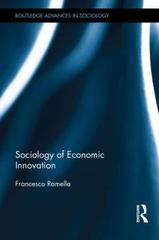Question
John lives three periods (t=0, 1, 2) and consumes non-durable goods (c) and housing (H). For t=0, John's utility is Uo = 0. At the
John lives three periods (t=0, 1, 2) and consumes non-durable goods (c) and housing (H). For t=0, John's utility is Uo = 0. At the end of t=0, John receives an endowment Ao into a savings account and a house Ho. Between t and t+1, each dollar earns interest of r dollars.
In t=1,2 John splits between non-durables (ct) and investing in housing (ht). Ct costs pt dollars and ht costs vt dollars. Housing depreciates by a rate of ? (i.e., Ht=(1-?)Ht-1 + ht. John receives wages of y1 dollars in t=1 and y2 dollars in t=2.
A1 is savings account after t=1. A2=0 (John's account is shut down since he is dead.) John can borrow/save freely and invest/disinvest in his house, i.e., A1/h1/h2 can be
John's lifetime utility function is
U(c1, c2, H1, H2)=u(c1, H1) + B u(c2, H2)
for t = 1,2, sub utility is:
u(ct, Ht) = a log (ct) + (1-a) log (Ht) John's canonical lifetime utility problem can be written as:
maxc1,c2,H1,H2 U(c1,c2,H1,H2) s.t. ?1c1 + ?2c2 + ??1H1 + ??2H2 = S.

Step by Step Solution
There are 3 Steps involved in it
Step: 1

Get Instant Access to Expert-Tailored Solutions
See step-by-step solutions with expert insights and AI powered tools for academic success
Step: 2

Step: 3

Ace Your Homework with AI
Get the answers you need in no time with our AI-driven, step-by-step assistance
Get Started


